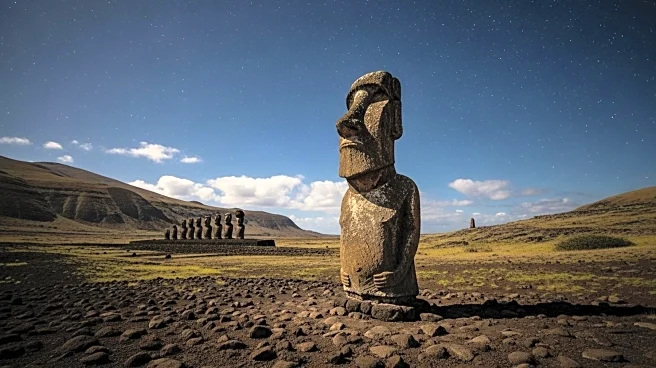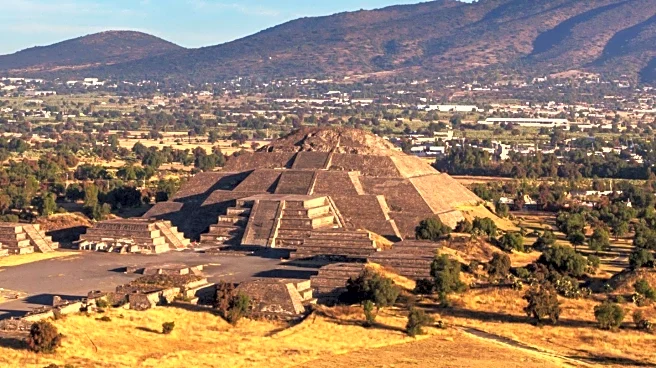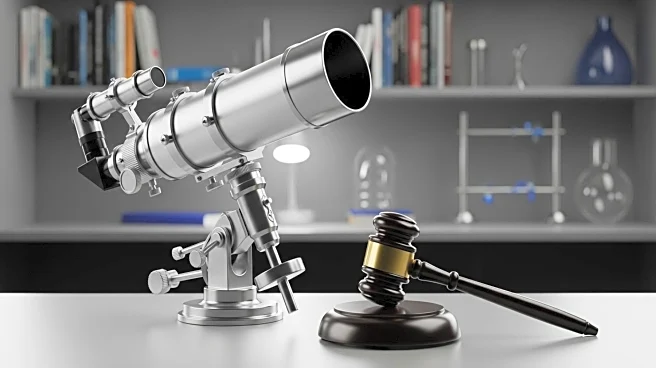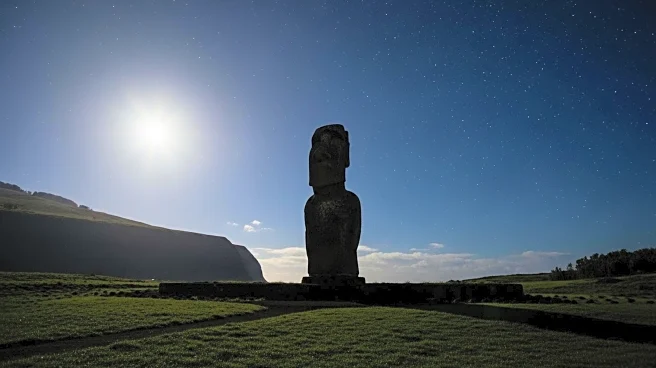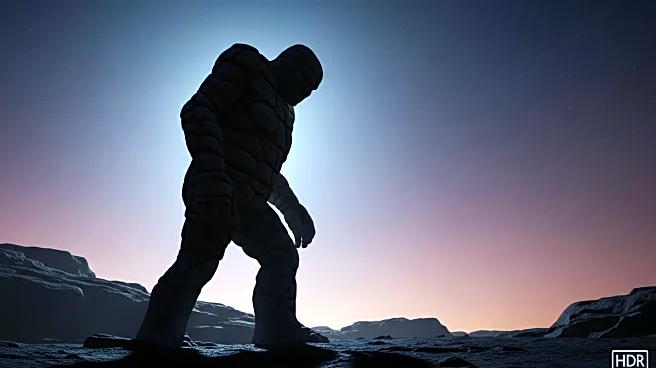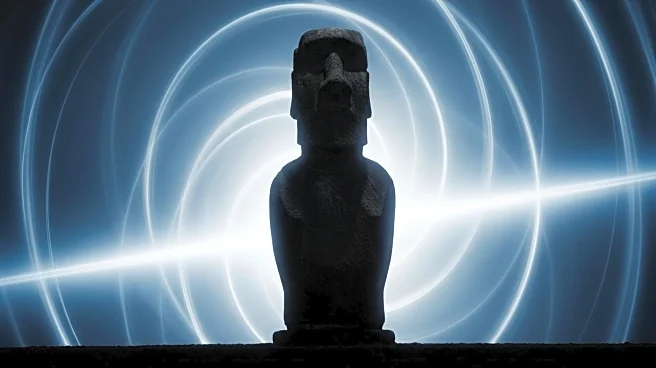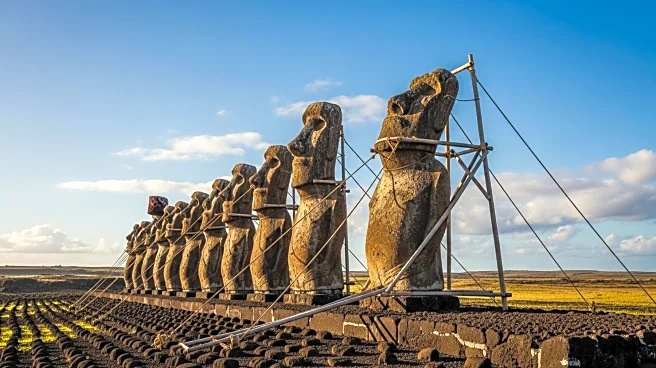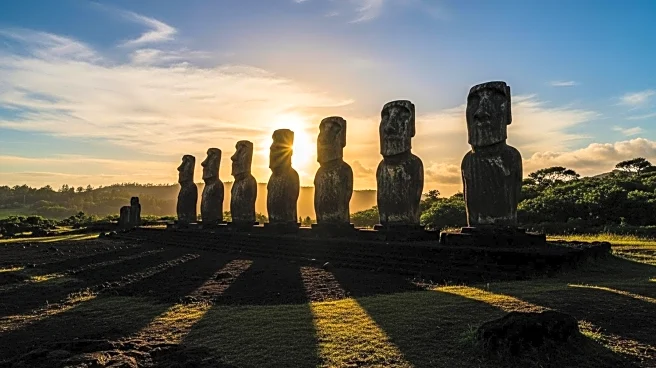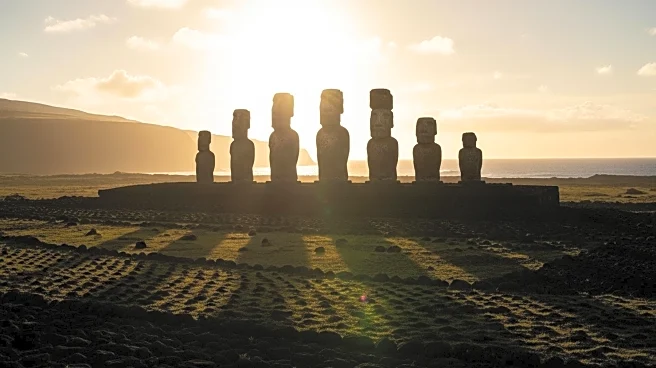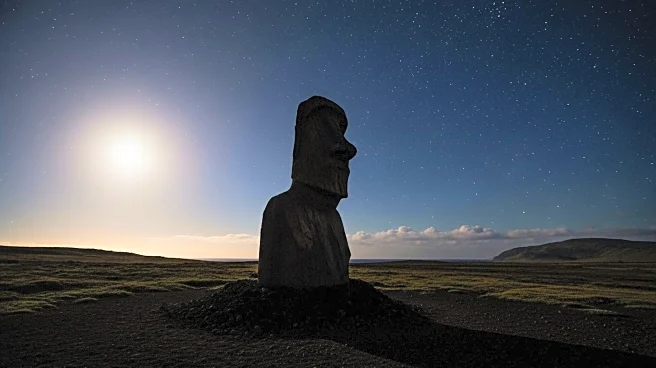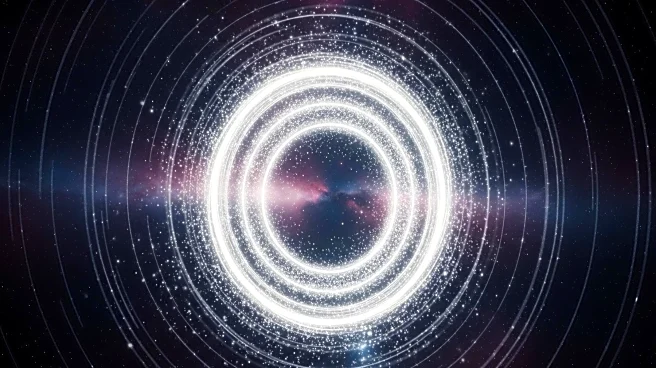What is the story about?
What's Happening?
A team of researchers, including faculty from Binghamton University and the University of Arizona, has confirmed that the iconic moai statues of Rapa Nui (Easter Island) could be moved using a 'walking' technique. This method involved a rocking motion facilitated by ropes and a small group of people. The study utilized physics, 3D modeling, and on-the-ground experiments to demonstrate that the statues were likely transported upright in a zig-zag motion along specially designed roads. The research challenges previous theories that suggested the statues were moved lying down on wooden devices. The team built a 4.35-ton replica of a moai with a forward-leaning design, successfully moving it 100 meters in 40 minutes with just 18 people.
Why It's Important?
This discovery sheds light on the engineering prowess of the ancient Rapa Nui people, highlighting their ability to achieve monumental feats with limited resources. The findings not only solve a long-standing mystery but also honor the ingenuity of the islanders. The research provides a scientific basis for understanding how the moai were moved, countering speculative theories with evidence-based conclusions. This has broader implications for archaeology, demonstrating the importance of experimental validation in understanding historical engineering techniques. The study also emphasizes the value of interdisciplinary approaches, combining anthropology, physics, and technology to uncover historical truths.
What's Next?
The research invites further exploration into the cultural and engineering practices of the Rapa Nui people. It challenges other researchers to find evidence that could disprove the 'walking' theory, fostering a scientific dialogue about ancient technologies. The study may inspire similar investigations into other historical mysteries, encouraging the use of modern technology to validate historical hypotheses. Additionally, the findings could influence how cultural heritage sites are preserved and interpreted, emphasizing the need to respect and understand the ingenuity of ancient civilizations.
Beyond the Headlines
The study highlights the ethical responsibility of researchers to base their conclusions on evidence rather than speculation. It underscores the importance of respecting indigenous knowledge and achievements, recognizing the Rapa Nui people's sophisticated understanding of physics and engineering. The research also prompts a reevaluation of how ancient societies are perceived, challenging stereotypes of primitive technology and showcasing the complexity of historical innovations.
AI Generated Content
Do you find this article useful?
